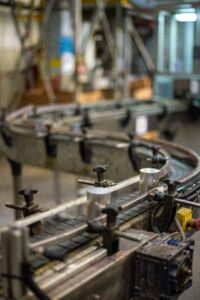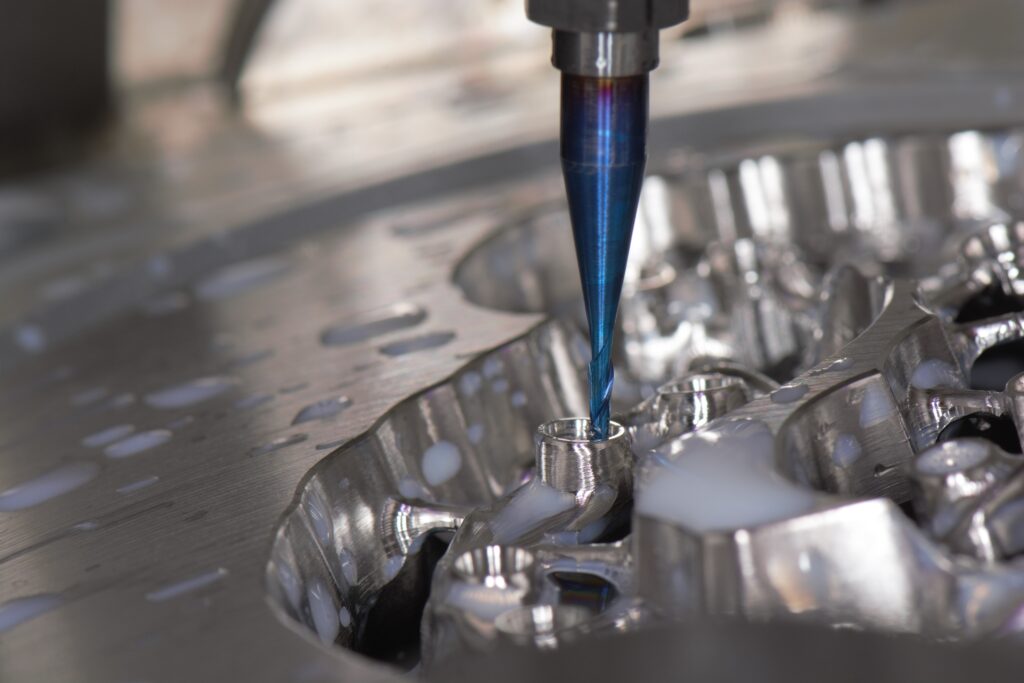Improved resiliency is a common goal for most manufacturers. Disruptive events can happen at any time, but the most resilient companies can recover from them faster. There are many ways to strengthen an organization, but manufacturers often rely on automation. Here are some of the benefits they frequently see while doing so.
Facilitating Better Collection and Use of Data
Internal data can help company leaders depend on factual information rather than guesswork when making decisions. Although effective data collection can be a daunting task, automation often makes it easier.
For example, an automated tool could seamlessly gather data associated with certain machines. It could also automatically put it in the desired format. Then, a plant manager or other person in authority could quickly review it and take appropriate action.
Many automated platforms that collect data work in the cloud, allowing authorized users to view it from anywhere. That benefit proved particularly advantageous for an executive at Chobani who previously traveled extensively to oversee operations at two plants in the United States and one in Australia. He now uses an automated platform to see real-time activities at each facility, plus manage projects associated with each one.
If a company leader wants to collect and act on data to make their operation more resilient, they must first determine what problems they want to solve. Collecting information without formulating a strategy first could prove overwhelming and largely useless.
Avoiding Costly Downtime
 Unexpected machine failures can quickly hinder even the most high-performing manufacturing facilities. Costs can run into the hundreds of thousands of dollars, even for relatively short outages.
Unexpected machine failures can quickly hinder even the most high-performing manufacturing facilities. Costs can run into the hundreds of thousands of dollars, even for relatively short outages.
Fortunately, automation can reduce such hassles, making manufacturing facilities more stable and reliable. For example, many company leaders connect their most crucial equipment to connected sensors that automatically monitor a machine’s condition, 24 hours a day, seven days a week. They can also verify that items adhere to efficiency standards, saving energy and reducing emissions.
These sensors cannot prevent every failure, but they’re useful for alerting plant managers to signs of trouble. They might pick up on excessive vibration or unusual temperature changes. Getting prompt alerts about those abnormalities helps people act faster to assess the problem before it causes downtime.
Some automated tools assist even more by providing statistics that technicians can access in the cloud. Getting those details before showing up to work on a piece of equipment could help a professional diagnose an issue faster. It might inform them that they need to order a part beforehand or help them rule out common problems before seeing the machine in person.
Reducing Injury Rates
 Manufacturing jobs often have inherent dangers. Training can reduce them, but so could automated solutions. For example, people who work in manufacturing frequently suffer repetitive motion injuries. If robots could carry out the movements instead, humans are at a lower risk of encountering problems that could put them out of work for days or weeks.
Manufacturing jobs often have inherent dangers. Training can reduce them, but so could automated solutions. For example, people who work in manufacturing frequently suffer repetitive motion injuries. If robots could carry out the movements instead, humans are at a lower risk of encountering problems that could put them out of work for days or weeks.
When employees have to take time off to heal, a manufacturing company’s resilience could decrease. An organization typically has less flexibility when coping with reduced staff numbers, after all.
Swiss food manufacturer Bischofszell Nahrungsmittel AG recently began a trial to investigate how automated technologies could reduce injury rates. Employees tended to get hurt when they put aluminum trays of ready-to-eat meals onto carts. Each tray measures 900 x 900 millimeters and weighs 5 kilograms.
Technology project manager Steffen Knoll pointed out, “Our employees are very experienced in this work, but risk of injury cannot be ruled out. What could be more appropriate than a division of the entire handling process between man and machine?” For example, employees must place trays into slots, which introduces the possibility of crushed fingers. Automated products could eliminate, or at least reduce, that threat.
Limiting Defects and Accelerating the Warranty Claims Process
Most manufacturing professionals know that there are typically direct links between product quality, customer satisfaction and trust. If a buyer perceives a manufacturer as providing high-quality goods, there’s a higher chance of feeling they made a worthwhile purchase. That leads to a customer having increased confidence in doing business with the company again.
Companies often rely on automation to reduce the likelihood of defects and recalls. High-tech machines are not foolproof, but if programmed properly, they’re usually less prone to errors than humans. Also, since many automated machines collect data continuously, it’s easier to determine the products or lines associated with faults — often before items leave the factory.
Relatedly, automation can speed up the warranty claims process, benefiting consumers and companies alike. For example, a manufacturer might use a process automation tool to sort digital warranty claims according to a tagging system. It’s then more efficient for the responsible parties to access particular electronic folders and get the relevant details.
Such efforts bring more transparency to consumers, especially if they receive automated alerts about products under warranty. They might get notifications when a company receives a faulty product, after a technician verifies the defect, and for the issuance of refunds or replacements. These updates contribute to company resilience by helping customers feel well cared for, even when problems arise.
Helping Companies Cope With COVID-19
The COVID-19 pandemic affected the world in unimaginable ways. Manufacturers encountered numerous associated challenges, ranging from supply chain shortages to decreased output due to social distancing and fewer people on each shift.
The leaders of affected companies frequently discovered that automation was crucial in helping them bounce back while adjusting to new health and safety requirements. For example, an automated tool could trigger the placement of new orders whenever essential supplies go below a defined threshold.
At Axis Machining, a metal fabrication facility, eight robots kept output at normal levels, even when all workers on one shift had to self-quarantine due to possible virus exposure. The company began using robots in August 2018. Since then, productivity has reportedly doubled without increasing staff numbers.
Moreover, a Northwestern University project involved using robots to test the protective equipment medical personnel don to reduce virus-related risks. This approach reduced a manufacturing bottleneck caused by the requirement to subject those products to specific tests before distribution. The issue is that only certain laboratories can perform the evaluations, and many were backed up due to demand. The new solution incorporates a robotic arm and machine learning. It could let manufacturers handle the tests in-house.
Letting Humans Use Their Expertise
Automation can also unlock human potential, giving people the freedom to solve problems, develop better processes and tackle other necessities that boost operational resiliency. Even the most advanced automated tools cannot replace humans — and they likely won’t for a long time, if ever.
Automated solutions are not magic fixes for every problem a manufacturing company faces. Some leaders invest in automation solely because they notice competitors doing it. However, the far superior approach is to investigate how automation can complement work done by humans.
Human ingenuity remains crucial in manufacturing and other industries. Investments in automation can help people focus on what they do best, such as being creative, expressing innovative ideas and pursuing continuous improvement.
The best opportunities to harness automation relate to well-defined, repetitive duties. When machines handle those, people get to apply their talents and knowledge in more rewarding ways.
Making Manufacturers Stronger With Automation
The examples here should give manufacturers valuable food for thought during their automation journeys. Some may already use automated tools and want to increase their dependence. Others may want to start using automation and get ideas for where to start. In any case, learning how peers rely on automation can guide company leaders to similar successes.












































